
GMC car cover is not just a temporary sheet to block sun and rain. For GMC owners in the United States, where a day can start in a tight downtown lot, pass through Sun Belt midday heat, and end by a salty marina or on a high-wind plateau, a correct-mechanism car cover acts like a second skin that keeps the vehicle in shape season after season. The common pain is very down to earth: buying a generic one-size cover for convenience, enjoying it for a couple of weeks, then abandoning it because it is bulky, balloons in the wind and scuffs paint, traps dampness and smells musty, while glass still gets mineral spotting and chrome still develops pitting. Once you understand why those damages appear and progress, you will see that choosing a cover is not about “the thicker the better,” but about a small protection system: ultra soft liner, custom-fit form, breathable fabric, and an outer face that both reflects UV and beads water so it rolls off. This article dives into each context, Urban, Sun Belt, Snow Belt, coastal, and high-wind plateau, explaining the risk mechanisms, the consequences if you choose wrong, then locking in fixes with criteria you can apply immediately.
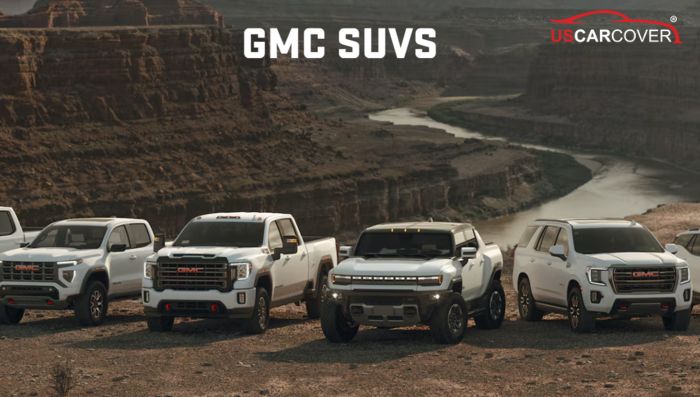
Related Articles: Geo car cover: reduce maintenance, protect 90s dashboards and plastics, and preserve resale value
Why GMC vehicles need a context-correct cover
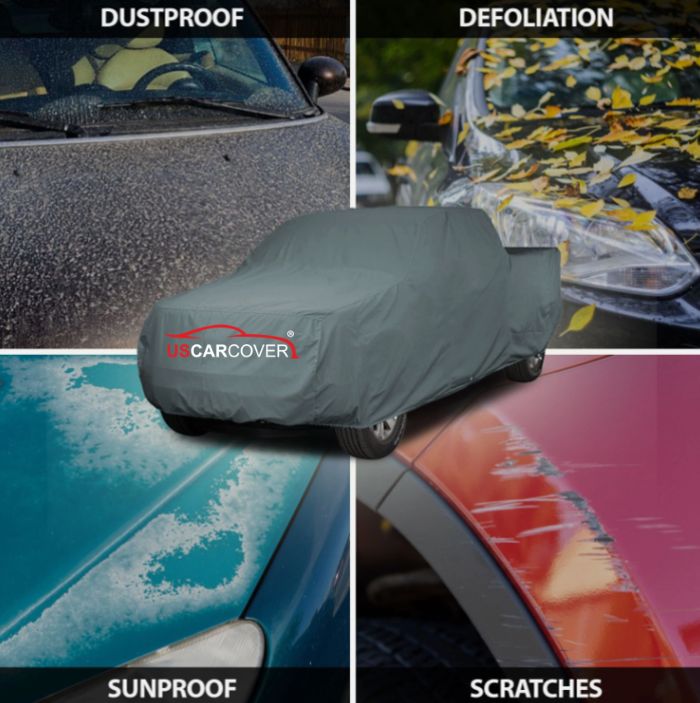
A well-chosen GMC car cover solves these exposure problems by fitting closely, breathing properly, and shedding water at the surface. If you have ever stood next to a Sierra 1500/2500/3500 HD or Yukon/Yukon XL, you can see both the strengths and the challenges of GMC. Big, flat body panels are exposed to sunlight longer, the bright chrome grille looks great but is sensitive to pitting in salty air, large glass areas spot easily after mineral-rich rain, and a Denali cabin with leather and wood is sensitive to UV and heat. The virtues of large SUVs and pickups also mean a cover must fit precisely and stay aerodynamically stable. If not, wind turns excess fabric into a balloon that rubs the paint repeatedly.
Correct protection does not come from absolute thickness, it comes from how the layers work together. The contact liner must be ultra soft to neutralize micro friction. The body of the cover must fit so there is no wind cavity. The fabric must “breathe” to let vapor diffuse outward, while the outer face must bead water so it rolls off. The outer face should also reflect UV to relieve cabin heat and surface stress. With recessed seams, soft hems, and stable underbody straps, the GMC car cover operates like a system rather than an inert tarp.
Related Articles: Genesis car cover: extend vehicle lifespan by blocking dust, leaves, UV, and heavy rain
Foundation criteria: choose once for all climates
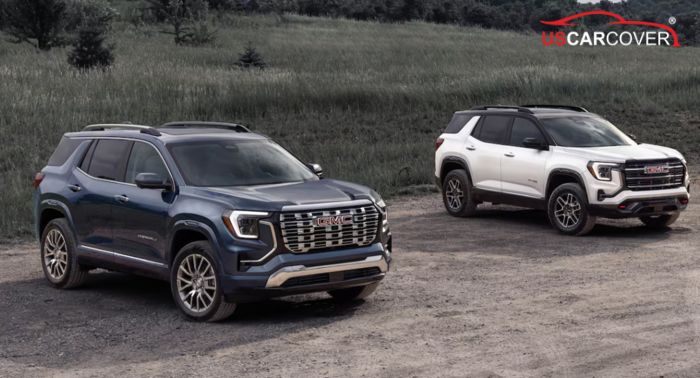
Before specific contexts, lock in the backbone so your GMC car cover does its job wherever you park:
- Ultra soft liner that does not bleed dye and does not stiffen over time: This layer touches clear coat, black paint, glass, chrome, and even reflective decals. When you stop in windblown dust, a few fine grains are inevitable. An ultra soft liner turns tiny movements into a gentle glide rather than abrasive rub. The liner must not bleed color when damp, because dye marks on clear coat are difficult to remove.
- Custom fit by year and configuration: Generic size is the number one reason for wind cavities. On the broad sides of Sierra or the large glass of Yukon, even a handspan of extra fabric creates a pocket. True custom fit includes accurate mirror pockets, elastic hems that hug edges, a calculated tail drop that matches the silhouette, and options for long bed, tonneau cover, roof rack, wide fenders, antenna, or auxiliary lights.
- Controlled breathability: Micro-porous fabric allows vapor to diffuse outward gradually. This is the difference between a cover that stays dry over days and weeks, and a nylon bag that traps moisture, creates odor, imprints minerals, and nudges light corrosion at paint lips and fasteners. Breathable does not mean letting rain soak in; we want vapor escape from below with water beading on top.
- UV reflection and water beading: UV is the “age accelerator” for leather, plastics, and veneers. Heat speeds the loss of natural oils in leather. If rain wets the entire fabric evenly, the whole sheet presses dampness on the surface for too long. An outer surface that forms round beads which roll away shortens wet contact time and reduces glass spotting.
- Recessed seams, soft hems, and reinforcement: Raised seams create a hard ridge that can print along panel edges if there is micro motion. Soft hems turn hard contact into cushioned contact. Underbody strap points, grommets, and stress corners should be reinforced to survive multiple windy seasons.
- Underbody anchoring and aerodynamic stability: In windy places, multi-point straps with adjusters distribute loads. Optional wheel-well hooks lock two of the most wind-exposed corners. The goal is to keep the cover steady without tightening so hard that it imprints edges.
- Compatibility with PPF or ceramic and accessories: Many owners run PPF or ceramic coatings. With a non-bleeding ultra soft liner and a precise form, a cover complements those layers by reducing repetitive friction in real use. The form should clear accessories so there is no tension point.
Once this technical frame is met, you merely blend it for climate and parking patterns.
Related Articles: Freightliner car cover: convenient and durable, snow resistant, UV resistant, rain resistant, effective tractor protection
Urban: fast, tidy, and clean use that addresses fine dust and light scuffs

In dense city lots, a GMC car cover makes daily protection fast and tidy while cutting fine-dust abrasion and light scuffs. Tight urban spaces and persistent fine dust define city life. A quick curbside stop under trees can leave sap and bird droppings. An open lot at noon turns the cabin into a sauna. In shared garages, a couple of light side rubs from passersby is not unusual.
The key is converting good intent into a lasting habit. To do that, the cover must be light in hand, have clear reference points such as a nose mark and mirror pockets, and fit closely so the workflow collapses to four beats: set the nose, align mirrors, let it fall evenly, secure. An ultra soft liner acts as a cushion when there is a light brush from foot traffic. The outer face needs UV reflection to cool the cabin, while the core must breathe so it does not trap musty dampness after a sudden shower. If you routinely stop 1 to 3 hours at midday, a half cover that shields glass and roof cuts direct solar load into the cockpit and prevents the “heat shock” when you return. For overnight in open lots, a breathable, close-fitting full cover with solid underbody anchoring is the optimal setup. In shared garages, an indoor soft-lined cover is enough to keep fine dust off and soften light door-edge taps.
Choose wrong, and you will gradually give up because the process feels like a chore. Choose right, and the motions become natural, while emergency washes, corrective polishing, and black-trim restoration quietly show up less often.
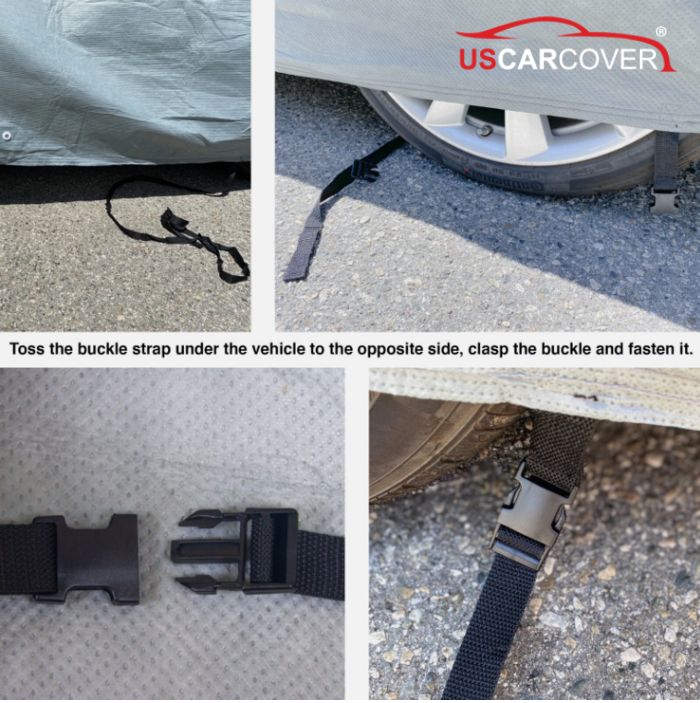
Related Articles: Compact and durable, rain resistant, strong UV protection, effective cabin cooling
Sun Belt: UV and heat are the “age accelerators” that must be cut at the source
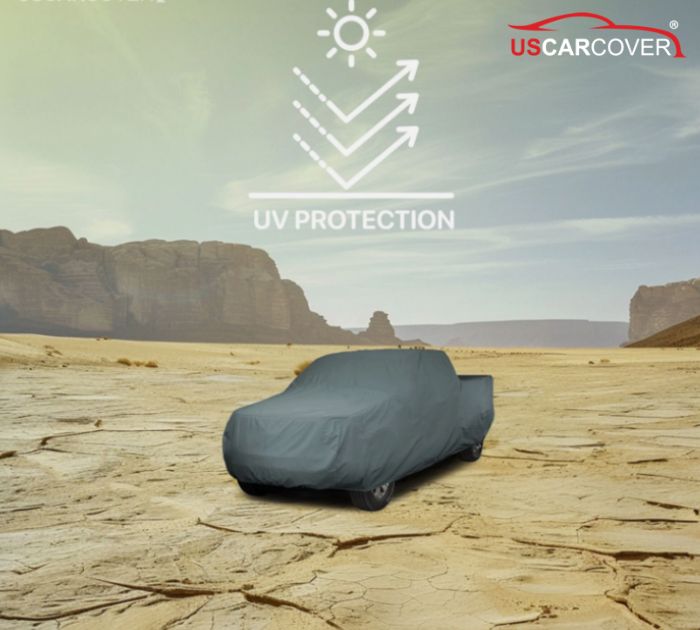
In strong sunshine, a GMC car cover that reflects UV and cools the cabin preserves leather, plastics, and veneer finishes. In the Sun Belt, the sun is your primary opponent. UV breaks polymer chains in plastics and leather, leaving chalking, fading, and fine cracking. Heat pulls natural oils out of leather quickly; veneers lose depth, and the steering wheel and seats turn scorching. Clear coat that sees continuous sun loses gloss sooner than expected.
The most effective fix is to remove a large portion of solar energy at the cover’s outer face. A surface that reflects UV well, with a suitable light tone, and a finish that beads water reduces heat picked up by the fabric. When the fit hugs the large windshield and flat roof on Yukon, or the vertical panels on Sierra, the cover does not flutter and grind fine dust. The fabric core must breathe so vapor from the cabin and surface can escape, avoiding a greenhouse effect during long parking.
The cumulative effect is noticeable after a few months. Opening the door, you do not face a blast of heat. Black plastics chalk less, veneers keep tone, and leather holds color longer. Leather care and dash refresh intervals stretch. Savings arrive not as one big number, but as many small line items that simply disappear.
Related Articles: Fiat car cover: Should you choose Full cover or half cover for Fiat
Snow Belt: rain, snow, road salt, and the freeze–condense cycle
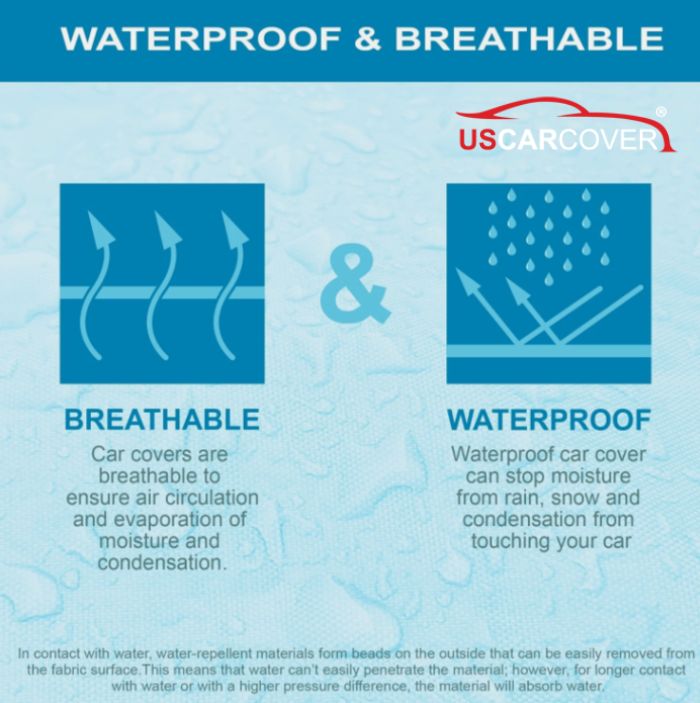
In the Snow Belt, wet snow and deicing salt test every surface. Mineral-rich water pressed under a sealed sheet leaves stubborn tracks on the large glass; long-held moisture generates odor, and paint lips and fasteners can start to dull. The freeze–thaw cycle repeatedly brings surfaces to dew point, then condenses and evaporates. If the fabric cannot breathe, it acts like a reservoir.
The answer here is true breathability. A micro-porous fabric that lets vapor out gradually keeps surfaces dry over days and weeks. The outer face must bead meltwater so it rolls away, shortening the time paint and glass sit wet under pressure. Solid underbody anchoring and reinforcement at wheel arches keep the cover stable under snow load and crosswinds. A custom fit reduces air pockets where ice forms in lumps.
The companion habits decide half the outcome: cover when the surface has dried when possible; if the cover gets wet after a snowy night, air-dry it before storage. You will find that morning removal needs less scraping, the glass is cleaner and drier, and after winter your paint edges and chrome look more even.
Related Articles: Ferrari Car Cover: Custom-fit, scratch-resistant, breathable, safe for paint
Coastal regions: salty humidity and chrome pitting need “breathing room” to dry themselves

Coastal air carries fine salt and high humidity. Salt is hygroscopic, holding moisture on the surface longer, creating conditions for chrome pitting and glass mineral tracks. If you use a sealed tarp, you build a damp greenhouse right against the vehicle, so musty odor and spotting arrive fast.
Here, “breathing” is the keyword. A micro-porous fabric lets vapor diffuse outward while the outer face beads water and sheds it. When the fit is snug and the anchoring stable, the cover does not balloon and drag salt grains as an abrasive. Soft hems keep edge contact cushioned on panels. Each time you remove the cover, lightly shake it to rattle out salt dust from the fabric face so you do not carry salty dampness into the next session.
The result is chrome that stays bright longer, paint lips that dull more slowly, glass with fewer tracks, and a cabin that avoids musty odor even when parked at the water’s edge.
Related Articles: Bentley car cover: luxury, quality, finesse even while the car is covered
High-wind plateaus: aerodynamic stability that shuts down repetitive friction

Wind is a silent enemy of car covers. On the large faces of a GMC, every extra flap of fabric is a potential air chamber. When wind shifts, the cover cycles vibration at the A pillar, glass edges, and wheel arches. If fine dust is present as an abrasive, repetitive micro motion draws swirl patterns without any obvious impact.
The strategy is getting geometry right from the start. A precise custom fit hugs ridges, channels, and pillars, shrinking air pockets. Mirror pockets lock position, elastic hems hug edges, and a calculated tail drop denies wind a path. Multi-point underbody straps distribute load, and wheel-well hooks lock two of the most attacked corners. Recessed seams and soft hems turn hard contact into cushioned contact, so when there is micro motion the surface remains safe. On unusually windy days, a pair of auxiliary straps at the nose and tail is the final lock to keep the cover from acting like a sail.
Once the cover is truly stable, the choice pays interest over time: fewer swirls, cleaner edges, and, most importantly, a daily covering habit you keep because it is easy and reassuring.
Related Articles: Dual-Ghia car cover for long-term storage: quick-dry, no musty odor, no soft-top mildew
Signs you chose the wrong cover and how to fix it before it is too late
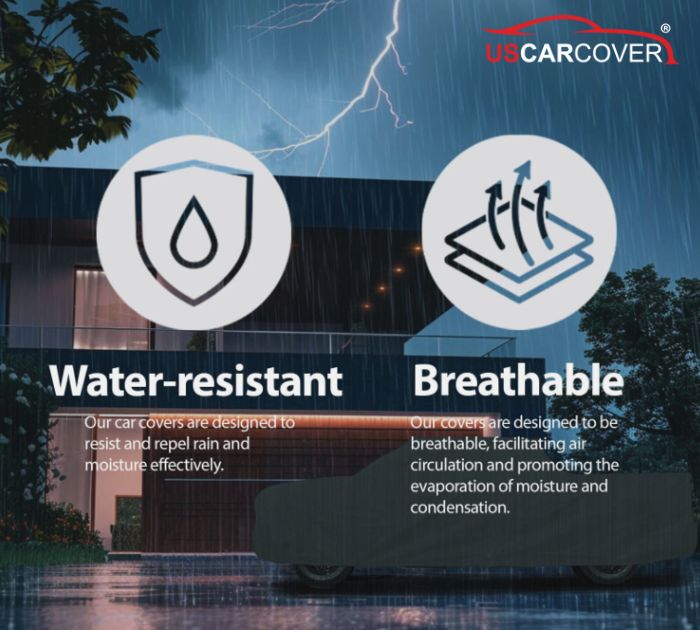
A mismatched cover confesses quickly. If it balloons in a moderate breeze, the form is wide or anchoring is lacking. Switch to a correct custom fit and add multi-point underbody straps with adjusters. If you see faint lines along edges after removal, the culprit is often raised seams or hard hems. A version with recessed seams and soft hems eliminates that printing. A cover that stays damp and smells musty signals poor breathability or storage while still wet. Move to micro-porous fabric and commit to air-drying before storage. Chrome and glass that still spot means water is not beading and rolling away, or you covered a wet surface for long periods. Prioritize a strong beading finish and get in the habit of covering a dry surface for long parking. If every install feels like a struggle, the cover is likely too heavy or lacks reference points. A lighter option with mirror pockets, elastic hems, and a nose mark will turn the routine into muscle memory within a week.
Handling to protect surfaces: turn theory into habit
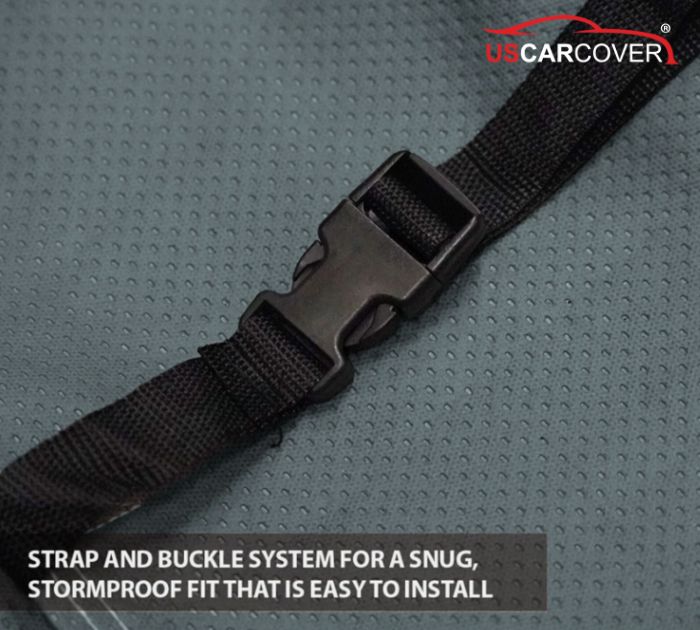
Most scratches come from rushed handling. The clean, dry, gentle, stable rule solves nearly all risks. Before covering, flick off large debris such as leaves and grit with a clean microfiber towel. If it just rained, let paint and glass surface dry, then cover. During installation, follow the rhythm of nose set, mirror alignment, even drop, secure, rather than sideways dragging to “adjust faster.” When removing, lift and fold in sections and do not drag along the sides. Store the cover in a breathable bag, not a sealed plastic sack. If the cover is wet, air-dry it completely before storage. Seasonally, shake off salt lightly before folding in coastal areas; in the Snow Belt, rinse road salt lightly, let it dry, then cover again. After one or two weeks, the motions become automatic and your exterior looks calmer and more consistent.
Where to buy a trustworthy GMC car cover
Choosing correctly the first time saves money, time, and patience. You need more than “something in stock.” You need a solution: model lookup, climate and parking guidance, both indoor and outdoor options, and custom-fit variants for long beds, tonneau covers, roof racks, wide fenders, antennas, and lights. US Car Cover fits that approach. At US Car Cover, you can filter by Sierra, Yukon/Yukon XL, Acadia, Terrain, Canyon, Hummer EV, select the exact form for year and configuration, and decide between an indoor soft-lined cover for garages and an outdoor cover focused on UV reflection, breathability, water beading, and underbody anchoring for open lots. The support team can translate your local climate into specifications: the Sun Belt prioritizes UV control and cabin cooling, the Snow Belt emphasizes breathability, beading, and anchoring, coastal areas put “breathing” first, and high-wind plateaus call for multi-point aerodynamic stability. Transparent shipping, online support, and fair returns let you start a daily covering habit with confidence.
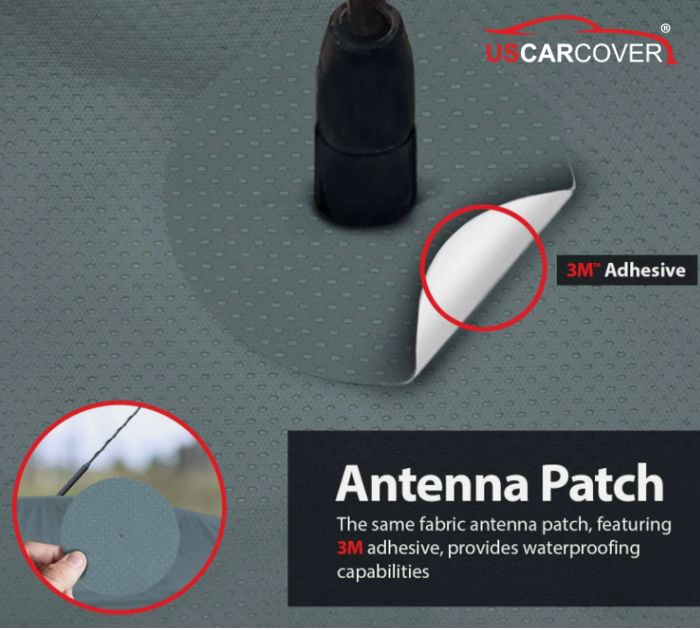
The most important point is choosing the right form the first time. When the cover hugs the shape, the liner is soft enough, the fabric breathes, and the outer face beads and reflects, installation and removal become quick and repeatable. Once the habit forms, you will naturally spend less on emergency washes, polishing, mineral-spot removal, and interior refreshes.
Whether you park in the city, live under Sun Belt sunshine, endure the Snow Belt winter, breathe ocean air, or sit on a high-wind plateau, the solution converges on the same answer: choose a GMC car cover as a protection system, not a random heavy blanket. The four pillars are an ultra soft liner so micro contact does not become scratches, a custom fit that eliminates wind ballooning, breathable fabric so moisture does not get trapped, and an outer face that reflects UV and beads water so it rolls away. When these four pillars work together with recessed seams, soft hems, solid underbody anchoring, and the clean, dry, gentle, stable routine, your GMC stays cleaner, cooler, and more surface-resilient through every season. Resale value holds, care costs decline, and every cabin entry feels as welcoming as opening a familiar door at home.
